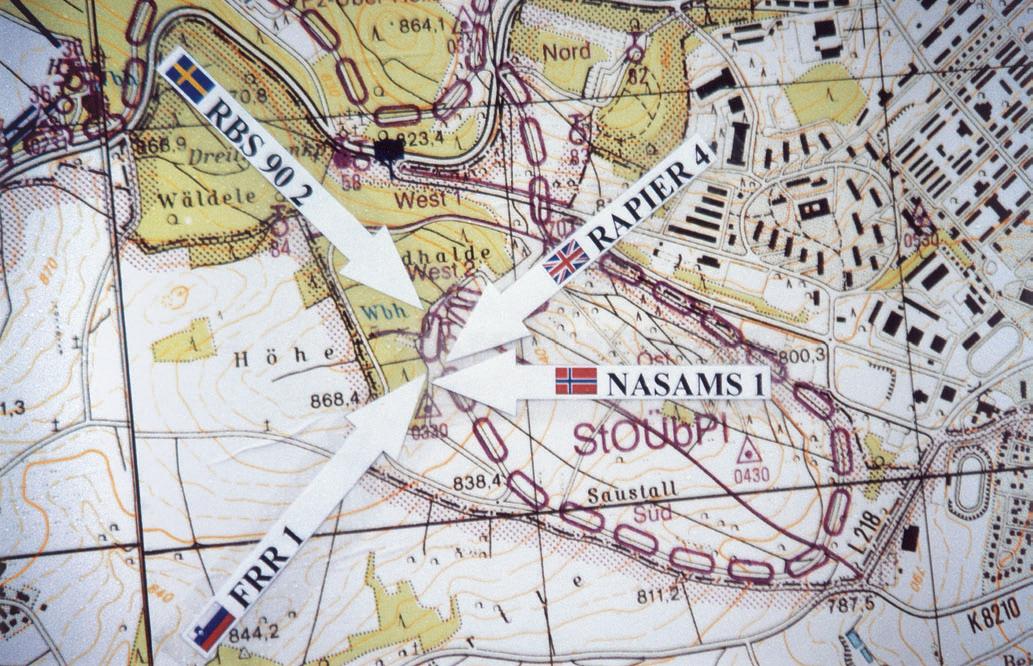
10 minute read
NASAMS in elite Joris Janssen Lok
by luftmils
NASAMS IN ELITE
The ground-based air and missile defence (AMD) capability offered by Luftforsvaret’s NASAMS community is an extremely useful tool for 21st-Century crisis response operations.That became clear during the high-profile German Air Force live flying exercise ELITE 2004,held last May south of Stuttgart.There,Norway’s new groundbased air defence (GBAD) high-readiness force (HRF), which became operational on 1 August,convincingly proved its ability to deploy overseas and to integrate in a multi-national air-defence environment.
Advertisement
TEKST AND PHOTO: Joris Janssen Lok International Editor,Jane´s International Defense Review
AAnd multi-national it was. Literally dozens of surface-to-air missile fire units and associated command and control and sensor systems from nine nations were concentrated within the restricted Heuberg area, occupying not more than 50-odd km of hills and valleys. Systems deployed in addition to NASAMS included Crotale NG (France), Patriot (Germany, the Netherlands), Hawk (Germany), Roland (Germany, Slovenia), Skyguard/RAC3D (Austria), RBS 90/Giraffe (Sweden), Rapier FSC (UK), very short range systems such as Igla (Slovenia) and Stinger (Germany, the Netherlands) and Russian-built SA-6 and SA-8 surfaceto-air missile systems (provided by Germany).
This extraordinarily-diverse GBAD cluster was challenged twice-daily by combined air operations (COMAO) strike packages including British, German and Italian Tornados; Greek, Turkish and US F-16s; French Mirages; Swiss F/A-18 Hornets and Swedish Viggens that
Multi-national air-defence environment: Dozens of surface-to-air missile fire units and associated command and control and sensor systems from nine nations were concentrated within the restricted Heuberg area.
N ELITE
operated from Lechfeld Air Base near Augsburg, Bavaria.
Tactical transport aircraft as well as helicopters were also active over the range. Electronic warfare (EW) was very much the theme of the exercise, and this included stand-off radar jamming, communications jamming and spoofing, and full use of aircraft survivability equipment such as chaff/flares and electronic countermeasures pods. A key role here was played by a Norwegian Da-20 from 717 Squadron at Rygge Air Station. This aircraft operated alongside four civilian-operated EW training aircraft from Neuburg Air Base near Ingolstad, Bavaria.
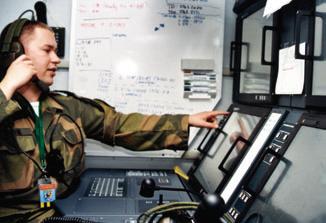
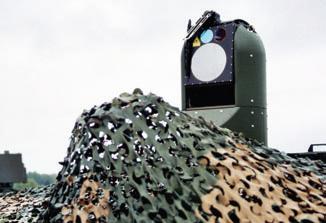
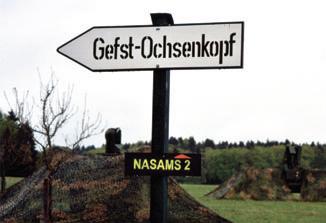
The Norwegian GBAD HRF deployed to ELITE 2004 with four fire units, although not in full warfighting configuration. “We have brought four fire distribution centres (FDCs) with their radars, power generators and new electro-optical sensors,” said the detachment commander, Lt Col Bjørn Tore Sneisen. “We’re simulating six launchers per fire unit, but for this exercise, bringing the launchers was not necessary. We only brought one for static display purposes.”
“A very important piece of equipment we had in ELITE 2004 was the new tactical command centre (TKE – Taktisk Kontroll Enhet) that we have developed in partnership with Kongsberg Defence & Aerospace. This should be seen as the engagement operations-part of our planned GBAD operations centre (GBADOC). The TKE sits above the NASAMS fire units and distributes targets to them; it is their interface to the higher-echelon command and control level.”
With slightly more than 40 personnel (drawn from Bodø, Ørland and Rygge) on site, the Norwegian unit at Heuberg was rather lightweight — the full GBAD HRF has a headcount of 199. Sneisen: “For ELITE 2004, we settled on a light configuration, focused entirely on engagement operations. We deployed to southern Germany by road. That turned out to be more economical than travelling by rail. The main reason for our presence is to obtain high-quality training for our NASAMS operators. For them the exercise is fantastic due to the amount of aircraft, the heavy concentration of EW challenges, and the variety of scenarios to work in, ranging from low tension to highintensity warfare.”
“The fact that we are together for two weeks, exercising in demanding conditions every day and staying in a local barracks, means that for us this is also a good teambuilding experience. NASAMS is a network-centric concept, the team part is essential for how well we perform,” said Sneisen, who normally commands the GBAD Battalion of 138 Luftving (Ørland Main Air Station).
In pouring rain outside the second NASAMS fire unit’s FDC, Lt Arnold Kristensen from Ørland explained that the scenarios were challenging indeed. “At home we usually get to see a maximum of four aircraft at the same time, here we see many more. We’ve already had several instances where we had more than 10 targets simultaneously in track. It is really challenging, sometimes even too much of a challenge.”
According to ELITE 2004 project officer Maj Tomas Emig (German Air Force) COMAOs of up to 100 aircraft were planned for the later parts of the exercise. In addition to all these aircraft, frequently operating at ground-hugging, terrain-masking altitudes down to 250ft, the GBAD operators had to deal with the busy civilian air traffic overflying the area at higher flight levels. This gave them a significant identification task.
In a bunker inside one of the Heuberg hills, the German Control & Reporting Centre (CRC) Messtetten (callsign “Sweetapple”) was acting as the higherechelon command authority for the GBAD forces in ELITE 2004. Here, Norway was represented by Capt Marius Lisø, a NASAMS tactical director and senior instructor at the Luftforsvaret Air Warfare Centre in Rygge.
In the CRC, Lisø worked as a SAM allocator alongside German and Netherlands officers. “As a NASAMS tactical director, I constantly need to work with higher-echelon command authorities. A good way to find out how they work is to join the guys that are actually controlling us,” he explained.
“The SAM allocator is the fusion point where all GBAD systems are integrated. It is a critical position, because the
target identification process is done from the CRC, and we want our GBAD systems to only engage what’s hostile. ‘Friendly protect’ is our main mission, as well as deciding the most effective way to engage the threat, either by GBAD or by fighter aircraft.”
Interoperability with other nations’ GBAD systems has been tested extensively during ELITE 2004, with good results, Lisø said. “From the CRC level, we were speaking directly to the German and the Netherlands Patriot ICC (integrated co-ordination central), the French Crotale command centre and our Norwegian TKE. We have successfully linked the Netherlands Patriot ICC and our TKE with each other and with the CRC, using the Link 11B and ATDL-1 datalinks. That means we can effectively work with them in a cluster concept.” According to Maj Jurgen van Keulen (Royal Netherlands Air Force), it has been proven that Patriot and NASAMS can be integrated in the same (ATDL-1) way as previously Hawk and Patriot. “We can for instance pass air picture information that we receive via Link 16 to the NASAMS system,” said Van Keulen, a tactics and doctrine expert who was the RNLAF’s analysis chief during ELITE 2004.
Both Sneisen and Lisø, insist that NASAMS has a “bright future” because it has a capability that few, if any, GBAD systems in NATO have today. That capability is to be able to detect and engage of small targets (cruise missiles, stand-off weapons, unmanned aerial vehicles) 360 degrees around out to more 20 km in range and, if necessary, at a high rate of firing. “During last year’s Iraq war, Patriot systems successfully intercepted nine tactical ballistic missiles that were fired from Iraq into Kuwait. But there were also five so-called Seersucker cruise missiles fired, and those weren’t even detected, let alone intercepted,” Lisø pointed out.
“As a consequence, the US has now decided to develop a new GBAD system based on three-dimensional 360-degree search radar and surface-launched AMRAAM missiles. This they want to deploy alongside Patriot. But it will not be operational before 2008. The same concept, however, is available right now, namely our NASAMS which is almost exactly the same. We’ve been operational since the mid-1990s and we have been able to build up a lot of experience, including ‘friendly protect’ skills and how to work with a higher
Challenging scenarios: “At home we usually get to see a maximum of four aircraft at the same time,here we see many more.We’ve already had several instances where we had more than 10 targets simultaneously in track, Lt Arnold Kristensen from Ørland explained.
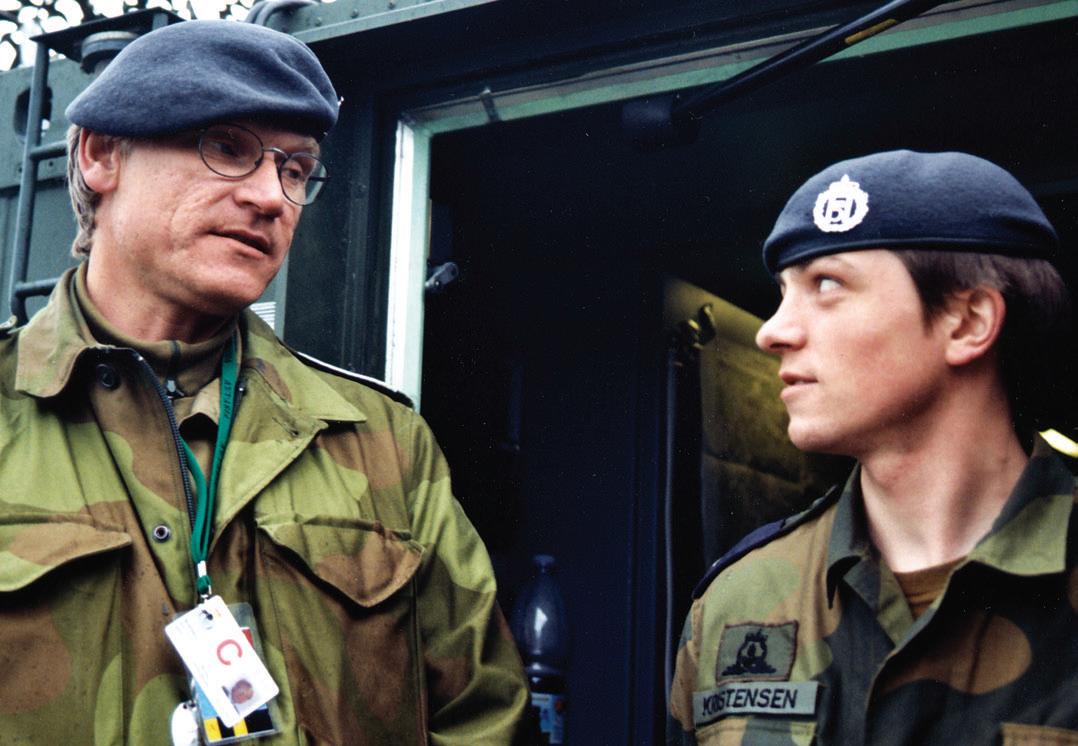
echelon such as a CRC. From our point of view, it is like this: if we would have been deployed in Kuwait with NASAMS, we could have intercepted those Seersuckers.”
Sneisen: “The NASAMS system was designed against a Cold War-type threat: defending our air bases against mass raids by Soviet cruise missiles. Today, we live in a very different world with a different threat, but we believe that NASAMS is just as relevant now as when it was designed.”
Lisø: “We concentrate on what we think of as the ‘new threats’: cruise missiles, UAVs, precision and stand-off delivered weapons; we focus more and more on the unmanned threats rather than on the delivery platforms. Also we must take into account the use of civilian types of aircraft in an offensive role. An obvious example is 9/11, but one could think of a terrorist-flown Cessna carrying a bomb or a bio-chemical weapons payload. It is very important to intercept such a target as far away from a population centre as possible. With NASAMS, which has a much longer range than Stinger-type missiles and which can be deployed in a distributed fashion to increase its defended area, we can offer that capability. Also keep in mind that AMRAAM is a low-cost interceptor when compared to the US$2.5 million PAC-3 missile used by Patriot.”
“Take a scenario from the recent Gulf conflict: a NASAMS battery with six launchers and 36 missiles ready-to-fire, three FDCs and three radars can defend a city like Kuwait from such threats with a very high probability of success.”
According to the NASAMS officers, their system is unfairly and incorrectly perceived as being “too heavy, too bulky, too manpower-intensive” to be deployed overseas in support of a crisis response operation. “One only needs to look at our neighbouring systems here in ELITE 2004 to realise that this is nonsense. Look at Patriot: their equipments are bigger and heavier than ours, yet the system is routinely deployed over long distances by users such as the US and the Netherlands. The British Rapier is perceived to be lightweight, but just have a look at their support trucks: it’s not at all different from us,” Lisø said.
“NASAMS is lightweight and in the future will become even more so with the upgrade to NASAMS II. That will bring even smaller shelters, modualrity in the radar and other improvements.
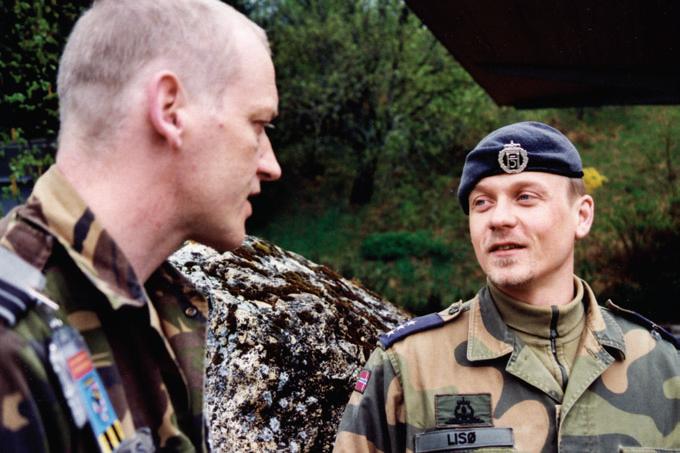
Teamwork: Capt.Lisø worked as a SAM allocator alongside German and Netherlands officers. Technically, it will be possible to install the FDC functionality in a suitcasesized computer terminal to operate from inside a tent. But for the engagement operations part of the system I think you will always need to have this in some kind of protected, secure, contained area such as a shelter.”
Lt Col Sneisen: “We really do have a credible expeditionary capability. If there would have a mission to provide air defence for the Olympic Games, I would have been able to take 15 men, an FDC, two radars and six launchers to Athens to protect the Games during daytime against terrorist-type air threats. We can do that, we can intercept very small targets.”
“For bigger operations, we would of course need more people to provide 24/7 coverage; probably also more FDCs, radars and launchers. Depending on the situation, we would also require a force self-protection capability.”
Both Sneisen and Lisø are convinced that the ‘new threats’ are realistic. “It is becoming cheaper and simpler to build or to acquire small, autonomous flying vehicles which can be used as kamikazestyle missiles,” Sneisen said. “Because of this, they are becoming available not only to the armed forces of many nations, but also to non-state actors such as terrorist organisations. You don’t need a whole lot of money and technical expertise to acquire a basic cruise missile capability. In relative terms, I can see these types of aerial vehicles becoming almost as prolific as the AK-47 rifle.”
Lisø: “The irony is that we have been employing NASAMS since the mid-1990s, and that the Americans are only now slowly transitioning from their Stinger-based short-range air defence concept to surface-launched AMRAAM. We are ahead of them, let’s build on this advantage.”









